
Cooking dried beans, rather than using canned beans, can save money and increase the variety of beans you eat. What deters some people from preparing dried beans from scratch is how long it takes to cook them. Despite a few shortcuts, beans still need soaking. So, it makes sense to try to shorten the cooking time without compromising safety or texture. Beans may cook a bit faster when covered, but other factors also come into play.
How Beans Cook
Beans cook by absorbing water in the presence of heat. Their ability to absorb water means they double or triple in volume when you soak them, and increase in volume slightly when you cook them. The first key to cooking beans is to use enough water. Make sure the level of the cooking liquid is 1 1/2 to 2 inches above the beans.
Factors in Cooking Speed
More than the variety of bean or whether the pot is covered, age and degree of dryness determine how quickly any given batch of beans will cook. This is why many recipes give an estimated time, usually with a range between 60 and 90 minutes. Unless the beans look dusty or have a musty smell, you cannot determine exactly how dry they are, and dusty, musty odors suggest the beans are too old and you need to throw them out. Some bean varieties take longer to cook than others, so check the package instructions. The hardness of your water can also make a difference in how long beans have to cook to become tender. According to the United States Dry Bean Council, adding 1/4 teaspoon of baking soda per 1 pound of beans to hard water can help make sure the beans become tender, although it causes damage to part of the thiamine beans contain.
Cooking With the Lid Off
Proponents of cooking beans uncovered suggest the steam removes some of the indigestible sugars that make beans gassy for some people. Uncovered beans become tender without getting mushy. The secret to uncovered bean cooking is frequent monitoring of the liquid level and adding water when needed. Occasional stirring helps the beans cook evenly. Use the open-pot method when the beans need to be tender but intact, such as for a casserole or a salad.
Cooking With the Lid On
Covering the pot traps and recirculates much of the moisture that would evaporate as steam. Setting the lid ajar lets just enough steam escape to keep the pot from boiling over. You will still need to check the liquid level and stir the beans occasionally. Critics of this method suggest that beans are more likely to get mushy and burst through their skins than with the open-pot method. Cook beans covered if they don't need to be firm and well shaped, such as for a soup or puree.
Cooking Under Pressure
The only way to significantly reduce how long it takes to cook beans is with a pressure-cooker. Depending on the variety of bean, the brand of cooker and the pressure level, cooking time, including cool-down, can be reduced to less than an hour. Follow the directions for your particular pressure cooker. According to the United States Dry Bean Council, microwaving will not produce similar results. Microwaving beans can take as long as conventional cooking. Use your pressure cooker when time matters.
Related Articles
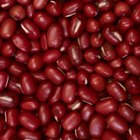
How to Soak Adzuki Beans

How to Cook Beans
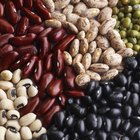
Time Required to Cook Beans in a Crock ...

How to Cook Dried Black Beans in a Slow ...
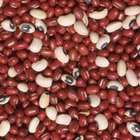
How to Convert Dried Beans to Cooked ...

Quick Ways to Cook Dried Soybeans

How to Soften Beans After Cooking

Do You Need to Soak Lentils Before ...

How to Make Homemade Red Bean Paste ...

The Best Way to Cook Dry Beans
How Long to Cook Dried Kidney Beans on ...

How to Reconstitute Dried Beans
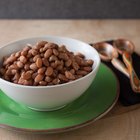
How to Cook Pinto Beans in a Crock Pot

How to Rehydrate Chickpeas
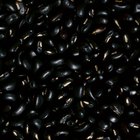
How to Cook Dry Black Beans

Can I Substitute Chickpeas for Black ...
How to Cook a Pot of Mixed Beans
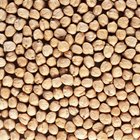
How to Use Dry Beans Without Soaking ...

How to Cook Beans With Kombu Seaweed

How to Eliminate Gas When Cooking White ...
References
Resources
Writer Bio
Janet Beal has written for various websites, covering a variety of topics, including gardening, home, child development and cultural issues. Her work has appeared on early childhood education and consumer education websites. She has a Bachelor of Arts in English from Harvard University and a Master of Science in early childhood education from the College of New Rochelle.
Photo Credits
Jupiterimages/Photos.com/Getty Images